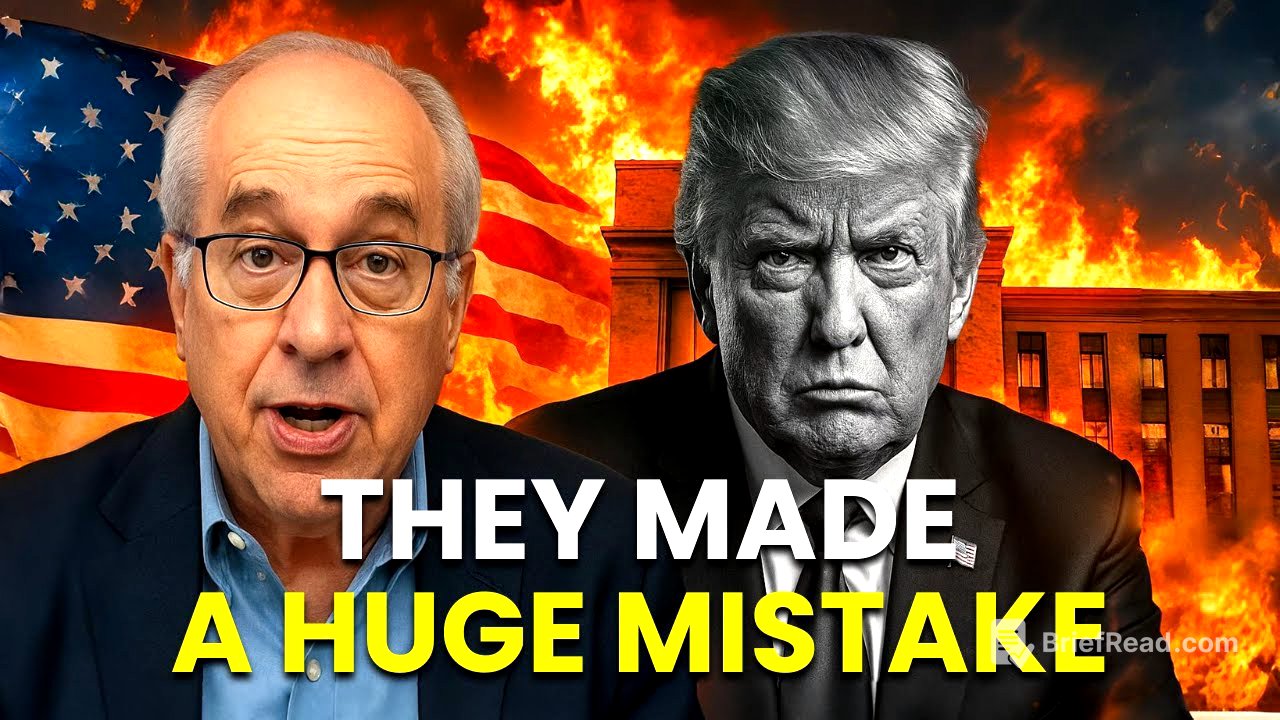TLDR;
This video addresses critical issues such as budget cuts in education, labor exploitation, trade wars, and the decline of US manufacturing. It argues that these problems are symptoms of a declining empire where the wealthy benefit at the expense of the working class and the environment. The video also highlights the importance of global alliances and fair economic practices to counter these trends.
- Trump's education budget cuts impact mental health programs in schools.
- Exploitation of public workers in LA County exemplifies a class war.
- US-China trade war is driven by US tariffs and a lack of global alliances.
- Decline in US manufacturing is due to corporate pursuit of higher profits through relocation.
Trump's Education Budget Cuts and Mental Health [0:00]
The Trump administration cut $1 billion from the Department of Education, specifically targeting school mental health programs. This decision impacts school districts' ability to hire mental health counselors, which are crucial for addressing rising psychological problems among students, exacerbated by the pandemic and frequent school shootings. The administration is simultaneously increasing spending on deporting undocumented immigrants, which agitates young people and increases the need for mental health support in schools. Schools are already firing mental health advisors due to budget constraints, illustrating how the costs of a declining empire are offloaded onto the general population while the wealthy are protected. This decision also exploits racial divisions, making it easier to cut programs needed by all communities.
LA County Strike and Labor Exploitation [5:22]
55,000 public workers in Los Angeles County went on a two-day strike to protest unfair labor practices. These workers, including mental health professionals, public works employees, and social workers, are essential for providing public services to millions of residents. The strike is a response to the offloading of costs onto workers, who are being squeezed with inadequate wages that fail to keep up with inflation. Politicians threaten layoffs if workers demand higher wages, a tactic the author identifies as blackmail. The author argues that instead of taxing the rich, politicians are weaponizing austerity and making workers pay the price for systemic issues.
US-China Trade War and Global Alliances [8:52]
The US initiated a trade war with China by imposing tariffs, to which China responded with lower retaliatory tariffs. The US aims to reduce its trade deficit with China, believing that China relies more on US purchases than vice versa. However, China has been cultivating economic and political alliances through initiatives like the Belt and Road Initiative and the BRICS alliance, encompassing over half the world's population. This allows China to shift production and trade to its allies. Meanwhile, the US is alienating its allies with anti-tariff policies, as seen in the Canadian and Australian elections. The author concludes that the US is likely to lose the trade war due to its isolationist approach, while China's global integration strengthens its position.
Decline of US Manufacturing and Long Supply Chains [14:09]
The decline of US manufacturing and the rise of long supply chains are not natural developments but the result of corporate decisions made in pursuit of higher profits. Starting in the 1970s, American corporations moved manufacturing to countries with lower wages, facilitated by advancements in jet travel and internet communication. This exodus was driven by the desire to escape labor struggles and high wages in the US. The environmental and social costs of long supply chains, including pollution and job losses, were ignored. China, unlike the US, has maintained its manufacturing base and does not depend on long supply lines. The author argues that corporate greed, not global competition, is responsible for the hollowing out of the American middle class and the associated economic and environmental problems.









